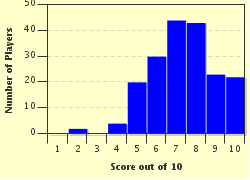Quiz Answer Key and Fun Facts
1. In the book "The World Set Free", published in 1914, the author wrote of atomic bombs, tremendous pillars of fire and radioactive vapour drifting and killing all they overtook. Who was the author?
2. In 1925, William 'Billy' Mitchell , Deputy-Director of the Air Service, predicted that Japan would launch a surprise air attack against which location at some future date?
3. Which engineer and employee of Thomas Edison predicted wi-fi and mobile phones in 1909?
4. In 1898, the novel "The Wreck of the Titan" had uncanny similarities to another famous ship-wreck. Which one?
5. Credit cards became common in the 1980s. Edward Bellamy predicted their use in his novel "Looking Backward: 2000-1887" published in what year?
6. Jonathan Swift wrote a story in 1726 in which he describes two moons about the Red Planet. Which book?
7. Astronauts reading electronic newspapers on something very like an iPad or Tablet can be seen in the film "2001: A Space Odyssey" (1968). Who wrote the book?
8. Among the many predictions attributed to Nostradamus was a great fire of '66. Where?
9. Ray Bradbury wrote of small headphones in the ears in his novel "Fahrenheit 451" in 1953. How did he describe them?
10. Cyrano de Bergerac wrote of a machine that could be used to listen to music or read a book. In which year was it first published?
Source: Author
Spontini
This quiz was reviewed by FunTrivia editor
gtho4 before going online.
Any errors found in FunTrivia content are routinely corrected through our feedback system.


